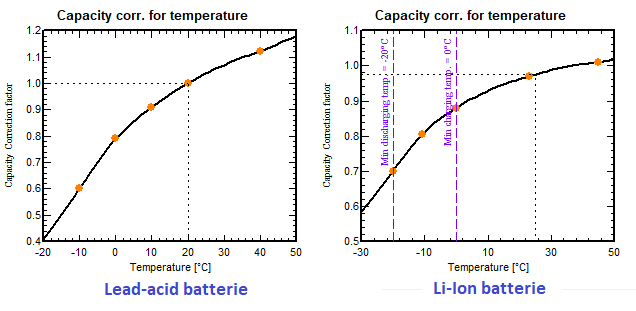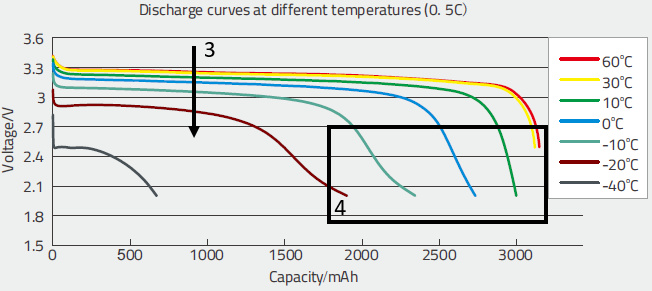|
<< Click to Display Table of Contents >> Capacity function of the temperature |
  
|
|
<< Click to Display Table of Contents >> Capacity function of the temperature |
  
|
The capacity function of the temperature is specified as a cubic profile.
Lead-acid
The capacity variation is rather high.
Only few manufacturers provide such information on their datasheets. In the PVsyst database we have a rather standard profile, to be used in absence of really specified data.
Manufacturers rarely specify a minimum temperature. The main limitation towards low temperatures is the freezing of the electrolyte, which arises earlier when the battery is empty (low concentration of the electrolyte).
We see also that we can get a significant increase above the nominal temperature (20°C or 25°). However at high temperatures the sulfatation becomes very important. We can estimate that above 25°C, every increase of 10°C divides the battery life by a factor of two.
Li-Ion
The capacity variation is less marked. Moreover the manufacturers always specify a lower temperature limit, either for the charging, and for the discharge (usually lower, for example for electrical cars).
Many manufacturers publish discharging voltage curves as function of the temperature: these allow to evaluate the points of the cubic profile. See an example below.
Use in Solar systems
In PVsyst you have some options for the battery temperature in operation: fixed (indoor), ambient, excess above ambient, etc. However this temperature is not subject to vary too much.
In hot climates and for big battery packs, it may be interesting to foresee a cooling device for increasing the battery life. This could be active only during the day, when there is a sufficient PV production.
.
